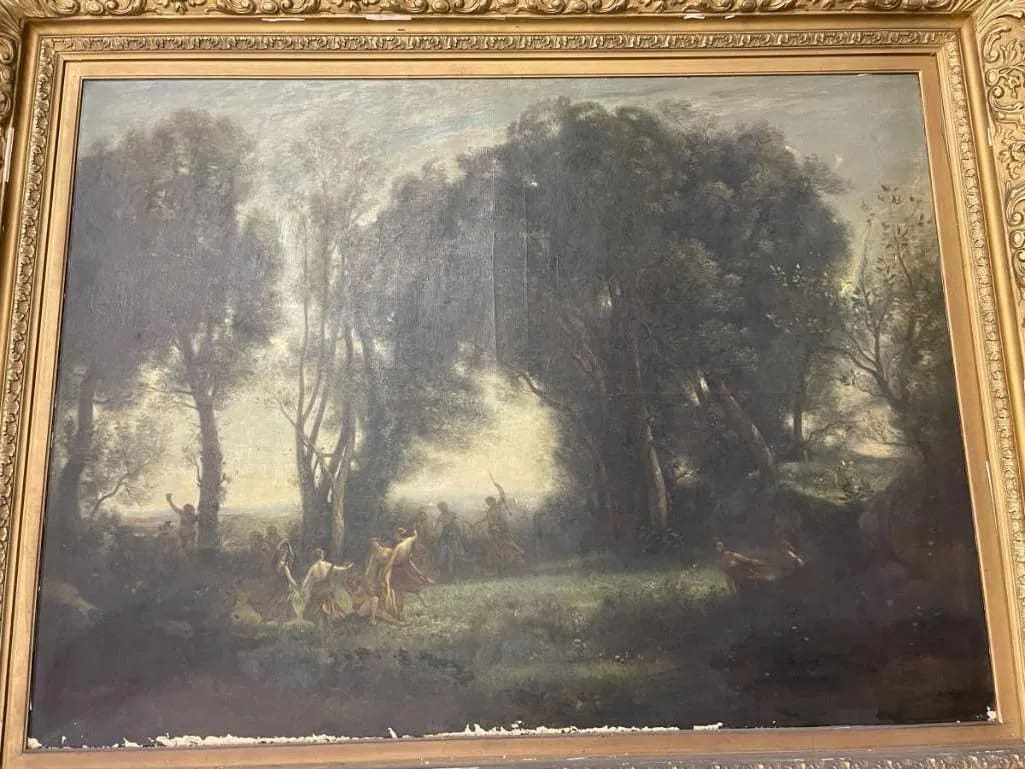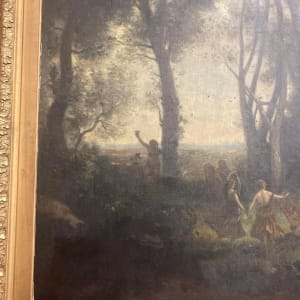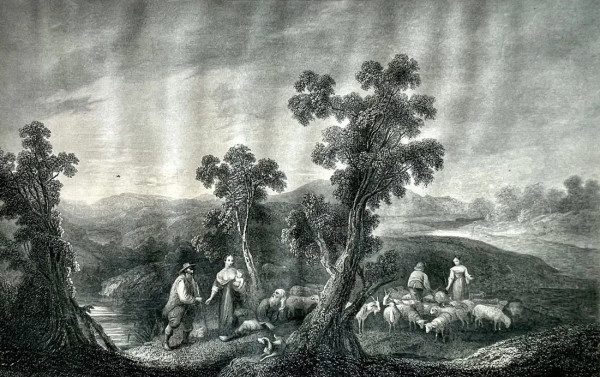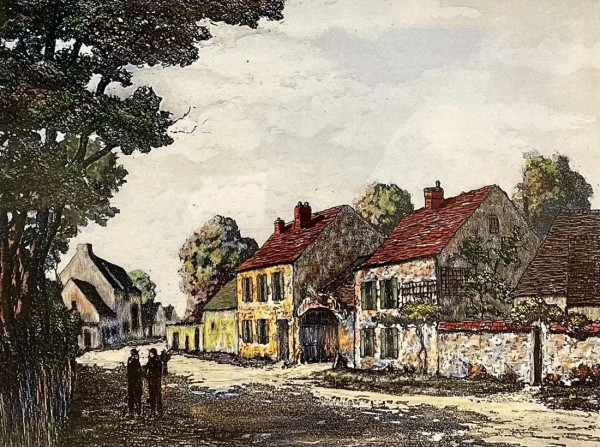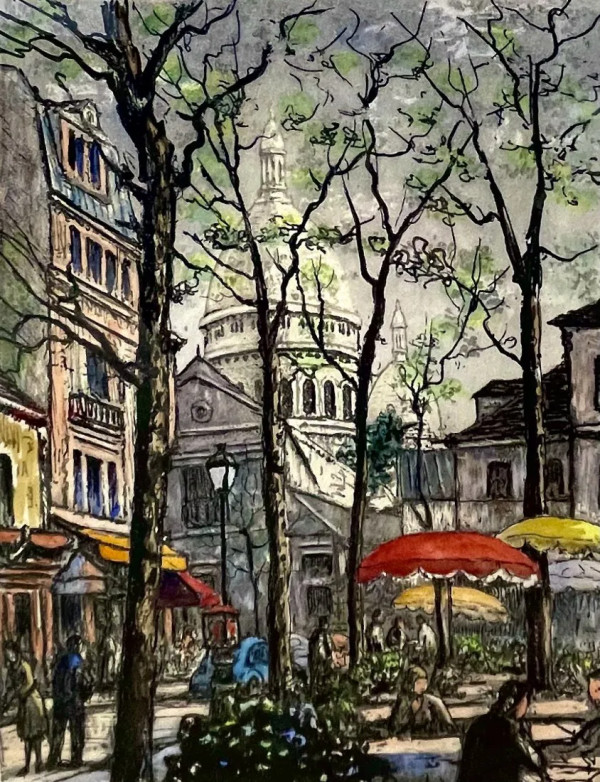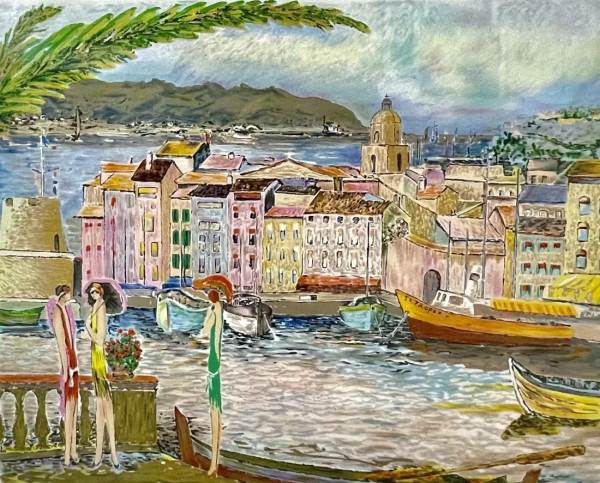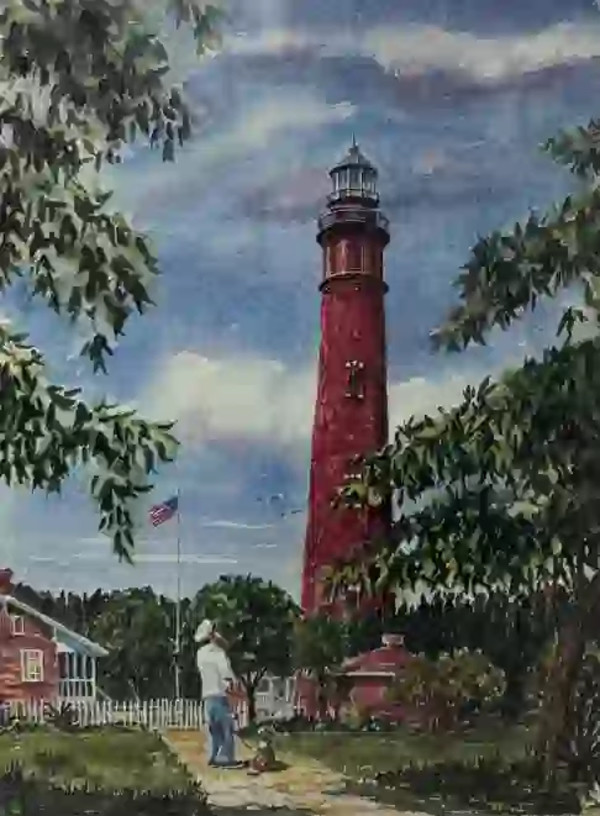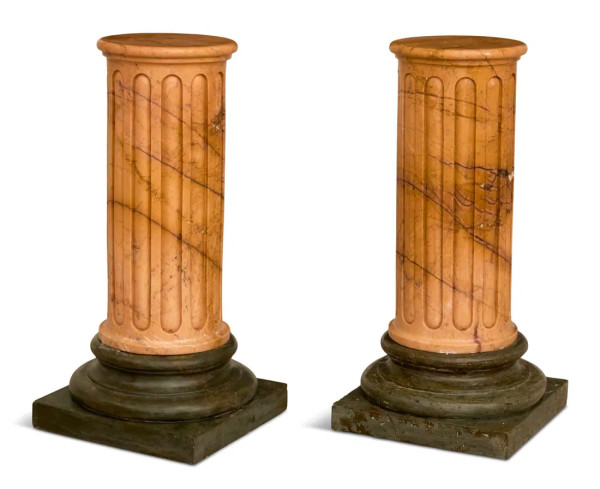This painting of the popular theme of Nymphs playing in the woods is done in an understated manner which draws the viewer to approach, and only then reveals its details. The interpretive approach captures the poetic atmosphere of Corot’s groundbreaking works, while also imbuing this scene with a freshness and character that is all his own.
The work perfectly combines a realistic depiction of the natural world with a spirited romanticism as the artists idealized nymph figures frolic playfully beneath a crisp morning sky. As a whole, it is a lovely composition executed with a level of skill and artistry that proves up the artist's exceptional talent.
A luxuriant forest is the romantic and lyrical landscape where the dance of the nude nymphs takes place in this joyful 19th Century antique oil on canvas painting featuring a mythological scene, housed in a giltwood frame.
Dance of the Nymphs and Naiads is a myth inspired by the tales of ancient Greece and ancient Rome, a subject already much loved in the Renaissance period as an allegory of rebirth - as in one of the most famous paintings in the world the Spring by Sandro Botticelli- then reproduced throughout the neoclassicism by academic painters - due to the renewed interest in classical artworks following the discovery of archaeological sites- and taken up later, with ecological purposes and meanings, also by the Barbizon school and Impressionist artists.
This historical oil on canvas painting, featuring a joyful scene with the three graces and other dancing nymphs some of them adorning the statue of Bacchus with flower garlands, perfectly combines a realistic depiction of the natural world with a spirited romanticism.
The nymph figures frolic playfully beneath a crisp morning sky, this is an highly decorative and lovely composition executed with a level of skill and artistry by a talented painter who captures the poetic atmosphere through a traditional and "tight" painting technique - with minute exactness, clear outlines, thin brush work, but with absolute definition of objects throughout.The romantic subject of the present artwork is closely inspired by an important work by the great Camille Corot, which is now exposed at the Musée d'Orsay (Paris).
The Dance of the Nymphs from which inspiration for this painting us drawn represented a turning point in Corot's career, announcing his move from "historical" to "lyrical" landscapes where the natural world is increasingly subject to atmospheric effects. In this example much like Corot’s work the artist does not go as far as a "pure" landscape like those of the painters of the Barbizon school. This work retains the mark of tradition both in the survival of mythological subjects and in the clear distinction between studies "after nature" and studio paintings.
The Dance of the Nymphs by Corot was the result of a "collage" of two different scenes. Even though the original painting was presented as a bacchanal at the 1851 Salon, the dancing figures may have been based on the artist's reverie of scenes recalled from the Opera. In addition, the backdrop of trees resembles a stage curtain, and imbues the whole scene with the atmosphere of a ballet. The title further adds to the ambiguity, the word "matinee" possibly being an allusion to daytime performances, as opposed to "soirées".
For his landscape, Corot produced a mirror image of a study he did in the gardens of the Farnese Palace in Rome twenty years earlier. The soft, blurred leaves, so specific to this later period of Corot's work, testify to the artist's interest in the elements of nature rather than the characters portrayed.
This is a significant aspect captured well here that contributed to Corot's importance in the development of 19th century painting. He is just one step away from the rural landscape, which itself heralded the research of the future Impressionists.
- Subject Matter: Landscape with figures
- Collections: Von Schmidt Family Trust Historical Paintings Collection
